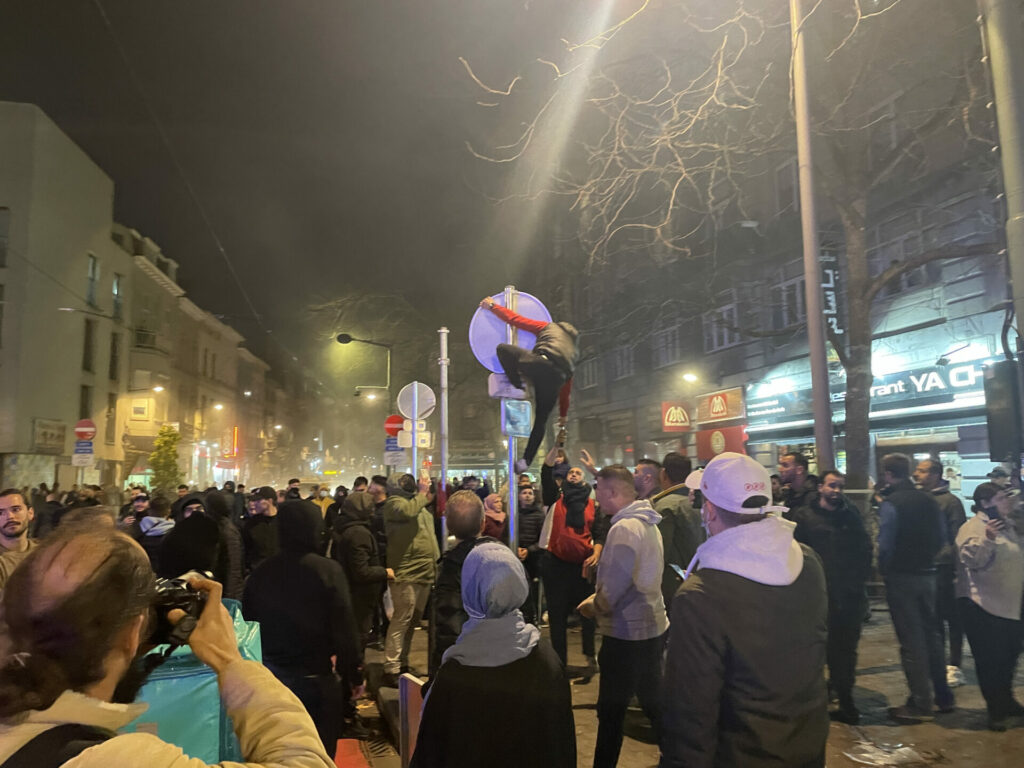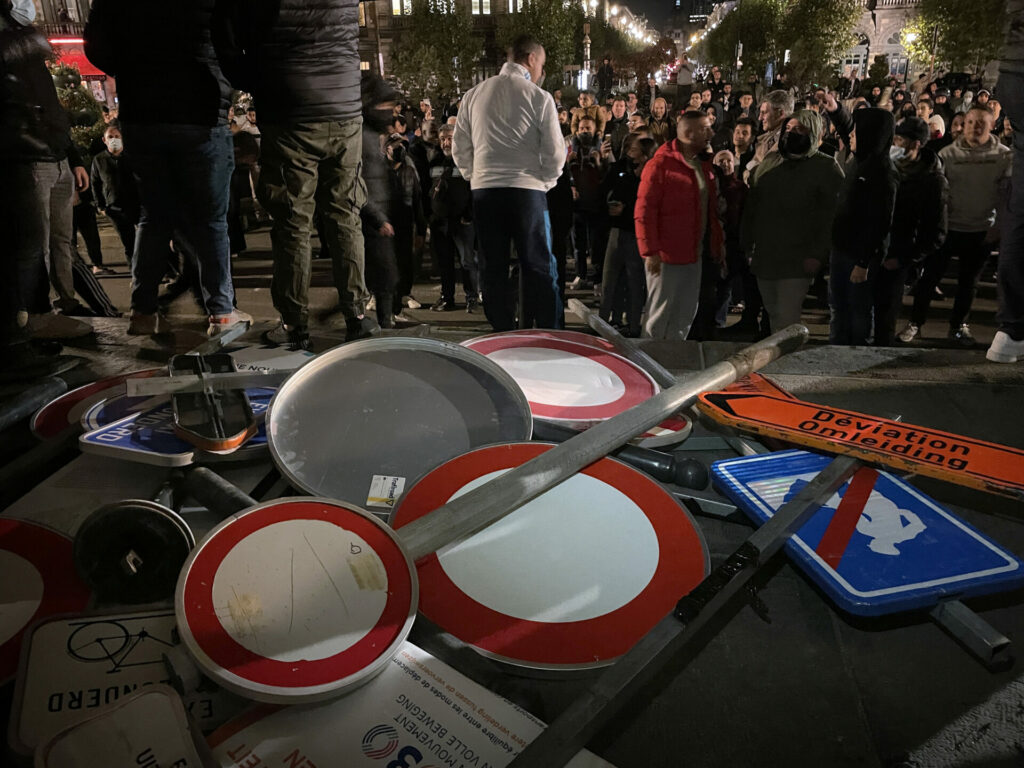On Tuesday, two police officers and a fireman were injured during the second consecutive night of protests against the implementation of the new Good Move traffic circulation plan in the Brussels municipality of Schaerbeek.
Over 100 people gathered at Place Stephenson to protest against the Good Move plan in the Cage-aux-Ours neighbourhood, with some unscrewing road signs and removing several bollards (that were placed on Monday to filter traffic) as the crowd cheered. After moving on to the Place du Pavillon, the fire service had to extinguish a small fire while some demonstrators pelted them with eggs.
"One firefighter was hit in the eye and taken to hospital. The team left the scene of the incident and called on the police," Walter Derieuw, spokesperson for the Brussels fire service, told reporters.
On their way to the Schaerbeek town hall on Place Colignon, protesters set off fireworks and took away road signs. The police also had to intervene when some people remained behind in the streets around Place Pavillon to create unrest. "The balance is two slightly injured police officers and nine arrests, of which three judicial and three administrative," said Olivier Slosse, chief of the Brussels-North police zone.
Despite heavy criticism after the announcement of the plan, rooted in the idea that residents were afraid it would only create more traffic, the introduction of the third and final phase went ahead on Monday. The aim is to make the neighbourhood largely car-free through one-way streets, traffic filters and various other measures.
As a result of last night's unrest, the municipal council decided to temporarily freeze the circulation plan in Cage-aux-Ours until March 2023 and hold further consultations with local residents. The previously-implemented circulation plans in the Azalea and Quartier Royale Sainte Marie neighbourhoods, however, remain in place.
Underlying issues
"We are convinced that everyone wants an improvement in the quality of life in their neighbourhood. Our will is to create social cohesion through dialogue and not confrontation," City Councillor Vincent Vanhaleweyn told Belga News Agency on Tuesday. "Our will is not to bury the project, but to bring together those for and against it in five months and find a solution for everyone."
For Pieter Fannes of the 1030/0 citizens' collective for better road safety (who are also keen supporters of the plan), it is regrettable that these actions are making it harder to have a dialogue between residents and the council. "Removing signs, taking away bollards. It is a bit like what happened in Cureghem."

Credit: Belga/Nils Quintelier
The municipality has communicated sufficiently about the plans before implementing them, but there are a lot of underlying issues that are surfacing due to this mobility issue, he told Bruzz. "The whole process crystallises around Good Move, but there are many underlying issues: housing prices, the feeling of no longer belonging in the neighbourhood, the cost of living crisis... You would have to be an incredibly clever sociologist to solve all that."
Schaerbeek is not going back on the principles of the plan, said Marc Weber, chief of Schaerbeek's mayor Cecile Jodogne's cabinet in a press release. "We are already adapting the project today to meet the requests that have been made. We are opening the filter at Place du Pavillon in the direction of Liedts, Gallait and Navez."
Related News
- 'Good Move' traffic plan starts Monday in Ixelles and Schaerbeek
- Good Move traffic plan remains unchanged in Schaerbeek, despite heavy criticism
- Dozens of protestors take down Good Move traffic plan signs in Schaerbeek
An analysis of the situation will be made on a daily basis and a close evaluation will be carried out in the short term (without waiting for the six months initially proposed) after which improvements could be made quickly, according to the wishes of the residents and taking into account the general interest.
"Democracy requires that we be able to debate and talk to each other. There is no need to listen only to those who shout loudly. There must be room for debate."
"The municipality has never communicated as much about an issue as it has done on this one, but we hear that it is still not enough and that many residents say that they were not informed of this implementation. Additional and more personal communication will be put in place so that citizens can become aware of the project," Weber added.

